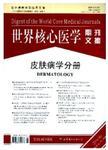口服雷帕霉素抑制冠状动脉原发病变支架植入术后再狭窄:口服西罗莫司抑制再狭窄(ORBIT)研究
Oral rapamycin to inhibit restenosis after stenting of de novo coronary lesions: The Oral Rapamune to Inhibit Restenosis (ORBIT) study出 版 物:《世界核心医学期刊文摘(心脏病学分册)》 (Digest of the World Core Medical Journals(Cardiology))
年 卷 期:2005年第1卷第2期
页 面:54-55页
学科分类:1002[医学-临床医学] 100201[医学-内科学(含:心血管病、血液病、呼吸系病、消化系病、内分泌与代谢病、肾病、风湿病、传染病)] 10[医学]
主 题:再狭窄 ORBIT 原发病变 西罗莫司 支架植入术 靶血管血运重建 负荷剂量 裸金属支架 血管内超声检查 金属支架植入
摘 要:The aim of this study was to establish safety and feasibility of oral Rapamyci n at two doses -2 mg and 5 mg -in achieving low rates of repeat target lesion revascularization (TLR) in de novo native coronary artery lesions. Drug eluting stents have shown the ability to limit restenosis. Oral Rapamycin is an alterna tive strategy that can target multiple coronary lesions suitable for treatment w ith any approvedmetal stent and at potentially lower cost. The Oral Rapamune to Inhibit Restenosis (ORBIT) study is an open label study of 60 patients with de novo lesions treated with bare metal stents in up to two vessels. After a loadin g dose of 5 mg, patients received a daily dose of 2 mg (n=30) and 5 mg(n=30) for 30 days. Six month angiographic, intravascular ultrasound(IVUS), and clinical follow up were conducted. Baseline clinical and procedural characteristics were similar: 10%of patients in the 2-mg group and 30%in the 5-mg group did not complete the course; 43%in the 2-mg group and 66%in the 5-mg group had side effects. At six month follow up, late loss (0.6 ±0.5 mm vs. 0.7 ±0.5 mm; p=N S), in stent binary restenosis (7.1%vs. 6.9%; p=NS), in stent percent volume obstruction by IVUS (29%vs. 24%; p=NS), and clinically driven TLR (14.3%vs. 6.9%; p=NS) were similar in 2-mg and 5-mg groups. Oral Rapamycin for the prev ention of restenosis is safe, feasible, and associated with low rates of repeat revascularization. Although associated with certain side effects, it may be cons idered for patients undergoing multivessel stents if proven in larger randomized studies.




